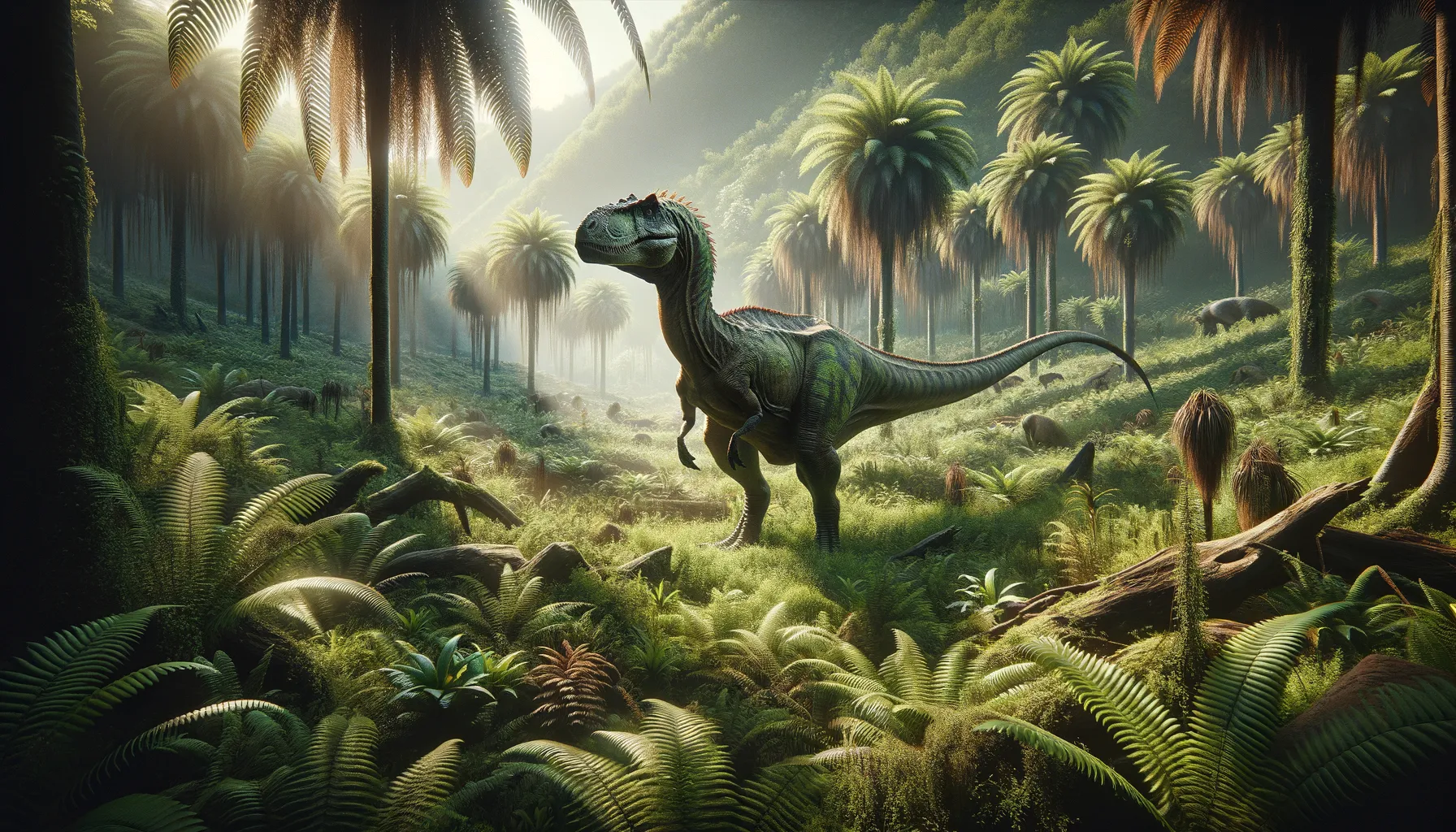
Theiophytalia
Cretaceous grazer with a leafy craving!
Period
Cretaceous
Length
Roughly 25 feet long.
Height
About 6 feet at the shoulder.
Weight
Approximately 2 tons.
Theiophytalia was a plant-eating dinosaur that roamed the Earth during the Cretaceous period. It was characterized by a relatively large body and strong legs, which helped it traverse the lush landscapes of its time. Its diet mainly consisted of ferns and other soft vegetation, making it an important part of its ecosystem. Discovered in the 19th century, Theiophytalia provides crucial insights into the diverse dinosaur species of North America.
Diet
Theiophytalia was an herbivore, feeding primarily on ferns and other soft vegetation. Its flat teeth were well adapted for grinding and processing plant material.
Hunting
As a herbivore, Theiophytalia did not hunt other animals. Instead, it would have foraged for vegetation in its forested environment.
Environmental challenges
Adapting to changes in plant availability would have been a challenge for Theiophytalia. Living in a dynamic ecosystem, it had to compete with other herbivores for resources. Environmental fluctuations might have influenced its migration patterns and habitat preferences.
Speed
Relatively slow-moving herbivore.
Lifespan
Estimated around 20 to 30 years.
First discovery
Discovered in 1878 in Colorado, USA.
Fun Facts
- Theiophytalia was a herbivorous dinosaur that roamed the Earth around 112 million years ago during the Early Cretaceous period.
- The name Theiophytalia means 'divine garden', inspired by the Garden of the Gods in Colorado where its fossils were found.
- Initially, fossils of Theiophytalia were mistaken for a more common dinosaur, Camptosaurus, until further study revealed it to be a unique species.
- Theiophytalia was roughly between 15 and 20 feet long, making it a medium-sized dinosaur for its time.
- Its fossils were first discovered in 1878 by the famous paleontologist Othniel Charles Marsh, known for his role in the 'Bone Wars'.
- It likely moved both on two legs and four, like other iguanodontid dinosaurs, depending on its activity, whether foraging or moving quickly.
Growth and Development
Theiophytalia likely hatched from eggs and experienced significant growth during its juvenile years. Its development depended heavily on the availability of food sources. Young Theiophytalia would have spent years reaching full size, gradually increasing its ability to digest tougher plant material.
Habitat
Theiophytalia inhabited lush, forested regions filled with ample vegetation. These environments provided the necessary resources for its herbivorous diet. Some of the likely habitats included river valleys and floodplains, which supported a diverse range of plant species.
Interaction with other species
Theiophytalia coexisted with various other dinosaur species, likely competing for similar food resources. Its presence would have contributed to the complex ecological dynamics of its time. It had to avoid predatory dinosaurs, which posed significant threats.
Natural lifespan
Theiophytalia had a natural lifespan of around 20 to 30 years.
Reproduction
Reproduction would have involved laying eggs in nests, possibly cared for until hatching. Theiophytalia's reproductive behavior might have included nesting in communal areas. Parental care could have been present to some extent, helping juveniles survive early stages.
Social behaviour
Theiophytalia may have exhibited some social behavior, possibly living in small herds or groups. This behavior could have provided protection from predators. Communication within these groups might have involved vocalizations or body language.
Fossil locations
Fossils of Theiophytalia have been primarily found in Colorado, USA. The initial discovery site in 1878 was critical in identifying the species. These fossil sites have shed light on the dinosaur's anatomy and historical environment.
